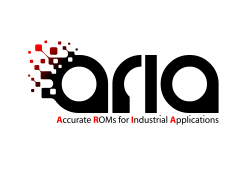The interviews were made with ARIA’s use cases, beneficaries, secondees and associated partners of the project. Our members have shared their insight on the benefits of inter-sectoral exchange in order to narrow the gap between basic research carried out in academia and industrial needs. These benefits were achieved via the secondments of the project with cross-fertilization:
- from industry to academia: communicate industrial needs, provide realistic test-cases;
- from academia to industry: technology contamination, casting of state-of-the-art technology in industrial context.
INRIA is the coordinator of ARIA project who contributed towards achieving the research and knowledge transfer objectives by hosting senior and junior researchers from Optimad, VirtualMechanics, Volkswagen, ESTECO, IEFluids. This has allowed a full embedding of industry research engineers by sharing codes, results, and databases for data topology inference. At the same time, Inria has provided a reciprocal embedding of junior and senior researchers in industry to understand the structure, the needs, the timings and the constraints actually encountered in real applied mathematics practice.
ESTECO is a beneficiary of ARIA. The contribution to the project is sharing and managing tools for handling the huge information volumes generated by simulation effectively, so that they can turn into valuable insights for ROMs and truly guide the numerical modeling process. On the other hand, thanks to seconded personnel, ESTECO has developed and evaluated ROM technology to improve the agnostic automated process of design exploration and optimization that represents its core business.
The R&D department of Optimad has benefited from the ARIA consortium and secondments in order to advance in integrating heterogeneous data obtained from different sources into one query model. This is of particular interest for the manufacturing industry in order to benefit from available historical data, distributed sensing of in-service devices, laboratory data and numerical models. The secondments to ARIA partners aim at formalizing a framework to combine this heterogeneity in a rational decision-making process.
Nurea has brought its medical application expertise to the ARIA project. The development of ROMs is of great interest in order to provide fast and efficient simulations of blood flows in vessels to extract clinical indicators of the evolution of cardiovascular pathologies. In this context, Nurea has provided medical applications with real data on various vascular pathologies (aneurisms, aortic dissections) and collaborated with academic experts of ROMs like Politecnico di Milano, SISSA and Politecnico di Torino to implement new models in Nurea’s decision making support software.
Hosting researcher at Valorem has allowed a direct interaction with wind engineering, expertise in numerical modelling of wind mills coupled with the knowledge of the renewable energy domain. Being integrated in Valorem has also allowed the hosted researchers to meet experts in various fields in the wind energy sector.
As an associate partner of ARIA, Virginia Tech has contributed expertise in the development, analysis, and testing of novel LES-ROMs and regularized ROMs (Reg-ROMs). The secondments of the project at VT helped improve the good practice in international relationship management through better understanding of international academic environment.
ARIA has allowed especially Early Stage Researchers (ESRs) to get in touch with industrial innovation culture and to project their research in a real-life setting. They have developed new skills in data-driven physical modeling, exposed to new research environments and have their career perspectives widened thanks to a cutting-edge expertise.



